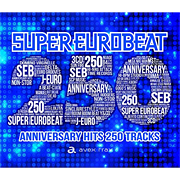House is a genre of electronic dance music characterized by a repetitive four-on-the-floor beat and a typical tempo of 120-130 beats per minute as a re-emergence of 1970s disco. It originated in the Black queer community in Chicago. It was created by DJs and music producers from Chicago's underground club culture and evolved slowly in the early/mid 1980s as DJs began altering disco songs to give them a more mechanical beat. By early 1988, House became mainstream and supplanted the typical 80s music beat.
Popular music of the United Kingdom in the 1980s built on the post-punk and new wave movements, incorporating different sources of inspiration from subgenres and what is now classed as world music in the shape of Jamaican and Indian music. It also explored the consequences of new technology and social change in the electronic music of synthpop. In the early years of the decade, while subgenres like heavy metal music continued to develop separately, there was a considerable crossover between rock and more commercial popular music, with a large number of more "serious" bands, like The Police and UB40, enjoying considerable single chart success.
Hi-NRG is a genre of uptempo disco or electronic dance music (EDM) that originated in the United States during the late 1970s and early 1980s.
Eurodance is a genre of electronic dance music that originated in the late 1980s in Europe. It combines many elements of rap, techno and Eurodisco. This genre of music is heavily influenced by the use of rich vocals, sometimes with rapped verses. This, combined with cutting-edge synthesizers, strong bass rhythm and melodic hooks, establishes the core foundation of Eurodance music.

Eurobeat refers to two styles of dance music that originated in Europe: one is a British variant of Italian Eurodisco-influenced dance-pop, and the other is a hi-NRG-driven form of Italo disco. Both forms were developed in the 1980s.

Todd Norton Terry is an American DJ, record producer and remixer in the genre of house music. His productions helped define the New York house scene in the 1990s and used extensive samples that blend the sounds of classic disco, the Chicago house sound, and elements of hip-hop. He has remixed a wide variety of artists.
Italo house is a form of house music originating in Italy. Typically popular in Italy, Britain, and United States since the late 1980s, it fuses house music and Italo disco. The genre's main musical characteristic is its use of predominantly electronic piano chords in a more lyrical form than classic Chicago house records. The best known example is Black Box's "Ride on Time", but the genre became very popular in the late 1980s and early 1990s for the uplifting and anthemic tunes against the background of indie-dance.
Italo disco is a music genre which originated in Italy in the late 1970s and was mainly produced in the 1980s. Italo disco evolved from the then-current underground dance, pop, and electronic music, both domestic and foreign and developed into a diverse genre. The genre employs electronic drums, drum machines, synthesizers, and occasionally vocoders. It is usually sung in English, and to a lesser extent in Italian and Spanish.

Marco "Benny" Benassi is an Italian DJ, record producer and remixer. He is widely seen as a pioneer of electro house, a genre brought into the mainstream by his 2002 summer club hit "Satisfaction".
Eurodisco is the variety of European forms of electronic dance music that evolved from disco in the middle 1970s, incorporating elements of pop and rock into a disco-like continuous dance atmosphere. Many Eurodisco compositions feature lyrics sung in English, although the singers often share a different mother tongue.
French house is a style of house music devised by French musicians in the 1990s. It is a form of Euro disco and a popular strand of the late 1990s and 2000s European EDM scene. The defining characteristics of the genre are filter and phaser effects both on and alongside samples from late 1970s and early 1980s European disco tracks. Tracks sometimes contained original hooks inspired by these samples, providing thicker harmonic foundations than the genre's forerunners. Most tracks in this style are in 4
4 time and feature steady four-on-the-floor beats in the tempo range of 110–130 beats per minute. French house is similar to future funk, although there are some key differences. Purveyors of French house include Daft Punk, David Guetta, Bob Sinclar, Martin Solveig, Cassius, The Supermen Lovers, Modjo, Justice, Air, and Étienne de Crécy.
Peter Harris, popularly known as Blu Peter, is a British electronic dance music producer and disc jockey from South Wales, who pioneered the nu-NRG music genre in the late 1990s. In the early 1990s, he served as resident DJ at major London nightclubs Heaven and Turnmills. He has performed at raves and nightclubs around the world.

Trans-X is a Canadian 1980s synth-pop band formed in Montreal, Quebec. They are known for their hit song "Living on Video", which was a worldwide hit single.
Hard NRG, nu-NRG, filthy hard house, or more recently just filth, is an electronic dance music genre similar in structure to UK hard house form, taking influences from German hard trance. The main difference is in the musical/thematic content of each style.

"Ride on Time" is a song by the Italian house music group Black Box. It was released as a single in July 1989 and included on Black Box's debut album, Dreamland (1990).
Italo dance is a genre of electronic dance music that originated in the mid-1990s in Italy as a regional development of eurodance; its sound subsequently evolved into a distinct, yet closely related form.
Post-disco is a term to describe an aftermath in popular music history circa 1979–1986, imprecisely beginning with the backlash against disco music in the United States, leading to civil unrest and a riot in Chicago known as the Disco Demolition Night on July 12, 1979, and indistinctly ending with the mainstream appearance of new wave in 1980. During its dying stage, disco displayed an increasingly electronic character that soon served as a stepping stone to new wave, old-school hip hop, Euro disco, and was succeeded by an underground club music called hi-NRG, which was its direct continuation.

"Move on Baby" is a song by Italian musical group Cappella, released in February 1994 by Italian label Media as the fifth single from their second studio album, U Got 2 Know (1994). It was written by Gianfranco Bortolotti, Ricardo Overman, Diego Leoni, Lorenzo Carpella, Alessandro Pasinelli and Bruno Guerrini. Bortolotti produced the song and it achieved success in many countries, particularly in Finland, Israel, the Netherlands and Switzerland, where it topped the charts. It has received sales certifications in Austria, Belgium, France, Germany and Switzerland. The music video for the song was directed by B. Smith and Wayne Holloway.
Discomagic Records (1979–1997), owned by Severo Lombardoni was the largest dance record label in Italy. It spawned a large number of sub-labels from the early 1980s to the early 1990s and it set the standards for an entire genre of music ranging from Italo disco to Italo house.
Lanfranchi & Farina is an Italian progressive house, electro house and house producer and DJ duo.






